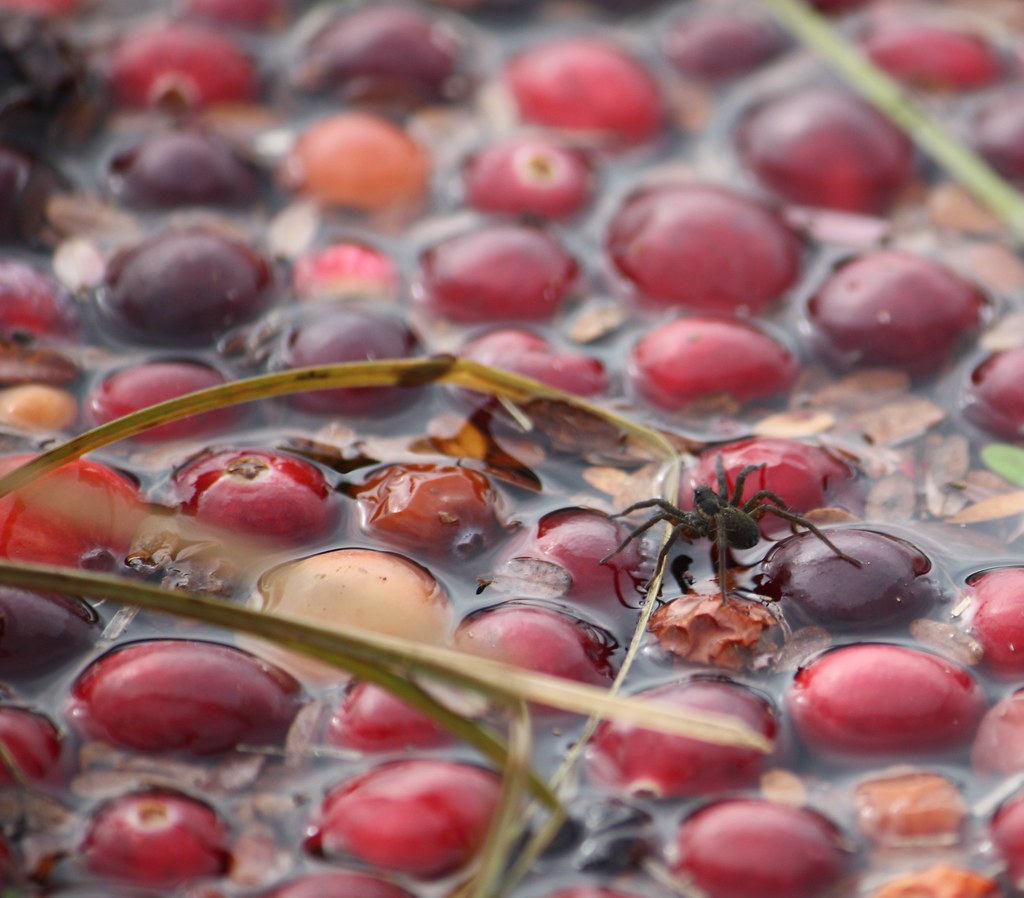Cranberry field spiders are fascinating creatures that play a significant role in the ecosystem of cranberry bogs. These spiders, which are often overlooked, contribute to the biological control of pests in agricultural settings. Understanding their behavior, habitat, and ecological significance is crucial for both farmers and nature enthusiasts alike. In this article, we will explore the various aspects of cranberry field spiders, their interactions with their environment, and the importance of preserving their habitats.
The world of spiders is diverse, yet many remain hidden from public awareness. Cranberry field spiders are particularly interesting due to their unique adaptation to life in marshy environments. As we delve deeper into this topic, we will uncover the essential role these spiders play in maintaining the health of cranberry fields. From their dietary habits to their reproductive behaviors, this article aims to provide a comprehensive overview of these remarkable arachnids.
Whether you are a farmer looking to enhance your cranberry harvest or a nature lover seeking to learn more about the local fauna, this article will serve as an informative guide. Join us as we embark on a journey to discover the intricate world of cranberry field spiders.
Table of Contents
- 1. Introduction to Cranberry Field Spiders
- 2. Habitat and Distribution
- 3. Physical Characteristics
- 4. Diet and Predatory Behavior
- 5. Reproduction and Life Cycle
- 6. Role in Ecosystem
- 7. Conservation and Threats
- 8. Conclusion
1. Introduction to Cranberry Field Spiders
Cranberry field spiders, belonging to the family Araneidae, are primarily found in the damp, marshy areas of cranberry bogs. These spiders are well-adapted to their environment, showcasing unique traits that enable them to thrive in such conditions. Their presence is often an indicator of the overall health of the cranberry ecosystem.
2. Habitat and Distribution
Cranberry field spiders are typically found in regions where cranberries are cultivated, including the northeastern United States, parts of Canada, and specific areas in South America. Their habitats are characterized by:
- Damp soil and waterlogged conditions
- Presence of cranberry plants
- Availability of prey such as insects
These spiders prefer the underbrush of bogs, where they can easily camouflage themselves among the foliage.
2.1 Geographic Range
The geographic range of cranberry field spiders aligns closely with cranberry cultivation areas. They are particularly prevalent in:
- Massachusetts
- Wisconsin
- New Jersey
3. Physical Characteristics
Cranberry field spiders exhibit several distinct physical characteristics that aid in their survival. Key features include:
- Size: Typically ranging from 5 to 10 mm in body length.
- Coloration: Often green or brown, providing effective camouflage.
- Web Structure: They spin non-sticky webs that are well-suited for capturing prey in their marshy habitats.
4. Diet and Predatory Behavior
As predators, cranberry field spiders play a vital role in controlling pest populations. Their diet primarily consists of:
- Insects such as aphids, flies, and beetles
- Other arthropods that may invade cranberry fields
Their hunting strategy typically involves ambushing prey from their webs or actively hunting in the underbrush.
5. Reproduction and Life Cycle
The reproductive cycle of cranberry field spiders is fascinating and involves several stages:
- Mating occurs in late summer, after which females lay eggs in protective sacs.
- Eggs hatch in spring, leading to the emergence of spiderlings.
- Spiderlings grow rapidly, maturing by late summer.
5.1 Mating Rituals
Mating rituals often involve intricate courtship behaviors, where males perform specific movements to attract females. Successful mating can lead to a higher chance of survival for the next generation.
6. Role in Ecosystem
Cranberry field spiders play a critical role in maintaining the balance of the cranberry ecosystem. Their presence helps control pest populations, which can otherwise harm cranberry crops. Additionally, they serve as prey for various birds and larger arthropods, contributing to the food web.
7. Conservation and Threats
Despite their ecological importance, cranberry field spiders face several threats, including:
- Habitat destruction due to agricultural practices
- Pesticide use that can eliminate their food sources
Conservation efforts must focus on sustainable agricultural practices that protect both the spiders and the cranberry industry.
8. Conclusion
In conclusion, cranberry field spiders are essential components of the cranberry ecosystem. Their unique adaptations and behaviors highlight the importance of preserving their habitats. By understanding their role in the environment, we can take steps to ensure their survival for future generations. We encourage readers to leave comments, share this article, or explore other related topics on our site to further appreciate the wonders of nature.
Thank you for joining us on this exploration of cranberry field spiders. We hope to see you again for more insightful articles on the fascinating world of arachnids and their ecosystems!
Lily Kawaii: The Rising Star Of The Online World
Cranberry Field Spiders: An In-Depth Look Into Their Habitat And Behavior
The Rise Of Gorlock: Understanding Its Impact On Pop Culture


